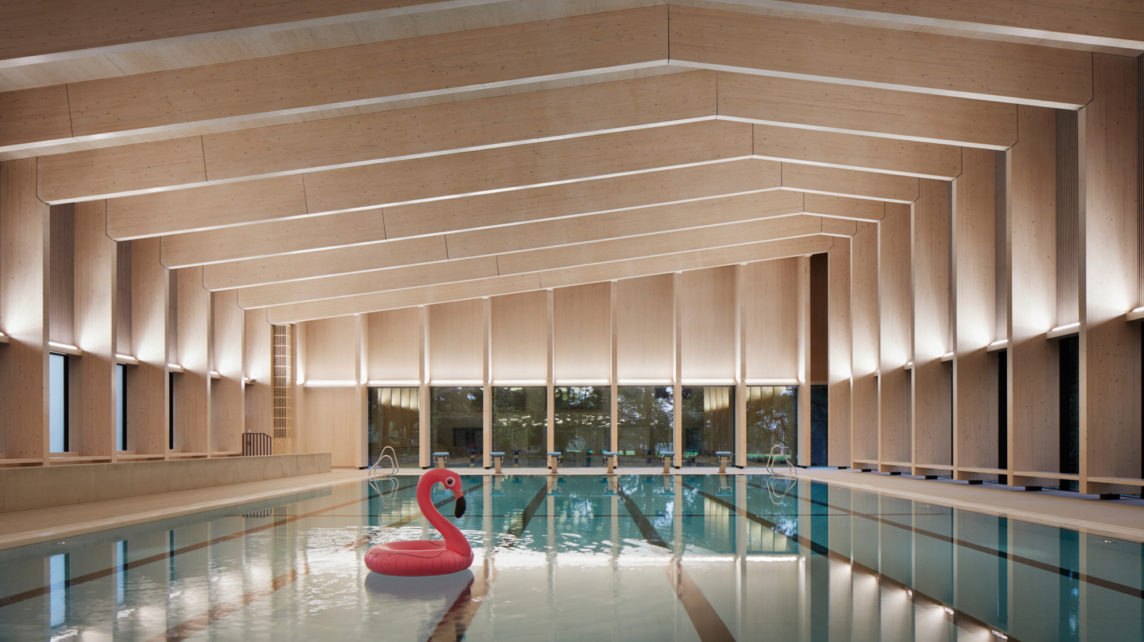The latest edition of “Architizer: The World’s Best Architecture” — a stunning, hardbound book celebrating the most inspiring contemporary architecture from around the globe — is now shipping! Secure your copy today.
Thatching is making a comeback. In the past few years, numerous architects have employed the craft building method in both new and traditional applications, and in both temperate and tropical climates — for evidence, you only have to explore Sui Fujimoto’s Mirrored Gardens, completed in 2014.
After the first industrial revolution, thatching fell out of favor — not because of fire or vermin, but because the skilled labor technique was more costly in comparison to mass-produced tiles or slate. Thanks to new and improved flame retardants and the cost effectiveness of locally sourced materials, thatching is now a viable option next to hard-roof coverings. As technological improvements and ecologically conscious building continue to evolve, this set of projects is indicative of the great thatch work that is to come.

© LEVS architecten

© LEVS architecten

© LEVS architecten
Doggerij by LEVS architecten, Don Helder, The Netherlands
This old farmhouse was renovated with two large living areas for up to 20 people. The old wooden skeleton of the dome was repaired and the distinctive thatched roof was completely reconstructed.

© negen graden architectuur

© negen graden architectuur

© negen graden architectuur
2-Under-1-Roof House EVA Lanxmeer Culemborg by negen graden architectuur, Culemborg, The Netherlands
With a thatched exterior, this project’s roof and façade create a striking, sculptural form that exudes a vernacular and contemporary look all at once. With highly insulated floors, walls, roofs and glazing as well as solar panels, the building is highly energy efficient.

© Guinée et Potin Architects

© Guinée et Potin Architects

© Guinée et Potin Architects
Museum & Biodiversity Research Center by Guinée et Potin Architects, La Roche-sur-Yon, France
The design approach for this museum and research center was to reinterpret the traditional building in a contemporary and innovative context: a thatched skin that entirely covers both walls and the roof of the preexisting structure. The thatched building blends mimetically with the surrounding forest.

© PROARH

© PROARH

© PROARH
Contemporary Interpretation of a Traditional Zagorje Cottage by PROARH, Kumrovec, Croatia
The preexisting traditional ‘Zagorje’ cottage was renovated with consideration of the regional heritage and design characteristics. The former skeleton was adjoined with a glass box that slides out of the main volume to give the cottage additional interior spaces.

© Studio 1984

© Studio 1984

© Studio 1984
Nid Vu, Nid Connu (The Nest) by Studio 1984, Muttersholtz, France
Largely inspired by agricultural vernacular constructions, the familiar shape and texture of this project pays homage to traditional barns in the region. As such, the choice of local materials was due to the fact that they were widely available, and as a natural consequence, are completely renewable resources.

© Hiroyuki Oki

© Hiroyuki Oki

© Hiroyuki Oki
Diamond Island Community Center by Vo Trong Nghia Architects, Ho Chi Minh City, Vietnam
Located on a previously empty space of a gradual development program, this multifunctional community center was designed not only for local residents but also foreign visitors. Eight bamboo pavilions were inspired by a traditional basket, where the outer layer of thatch overhangs from the inner frame to create deep eaves that protect the whole structure from harsh sunshine and heavy rainfall.

© a21 studio

© a21 studio

© a21 studio
The Tent 1 by a21 studio, Natural Heritage Area Trang, Vietnam
Perched atop a halfway terrace on a rocky hillside, this ‘The Tent 1’ is located within a hot spring spa and mineral resort. A steep roof with thick thatch prevents sunlight while allowing guests to enjoy forested views of the river and city.
The latest edition of “Architizer: The World’s Best Architecture” — a stunning, hardbound book celebrating the most inspiring contemporary architecture from around the globe — is now shipping! Secure your copy today.

 2-Under-1-Roof House EVA Lanxmeer Culemborg
2-Under-1-Roof House EVA Lanxmeer Culemborg  Contemporary Interpretation of a Traditional Zagorje Cottage
Contemporary Interpretation of a Traditional Zagorje Cottage  Diamond Island Community Center
Diamond Island Community Center  Doggerij
Doggerij  Museum & Biodiversity Research Center
Museum & Biodiversity Research Center  Nid Vu, Nid Connu (The Nest)
Nid Vu, Nid Connu (The Nest)  The Tent 1
The Tent 1 


